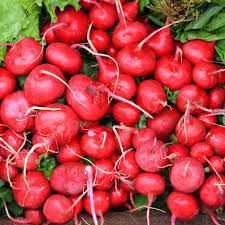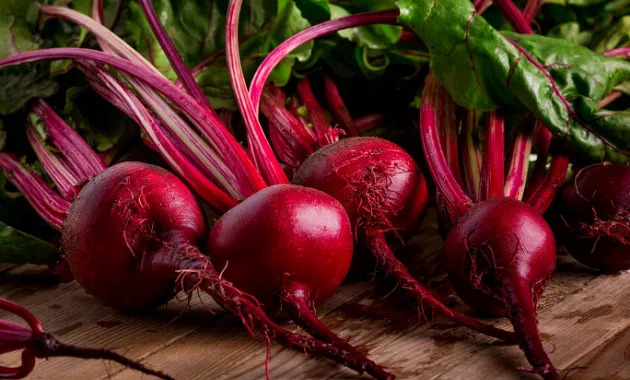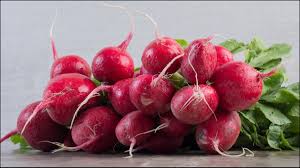
Boosting nitric oxide through foods like beets, leafy greens, garlic, and citrus fruits enhances circulation, lowers blood pressure, and improves athletic performance. Timing consumption within a 4-hour window maximizes these benefits.
In the realm of nutrition and fitness, nitric oxide has become a hot topic for its significant role in enhancing performance, improving cardiovascular health, and promoting overall well-being. It is a molecule that is produced in the body and plays a crucial role in vasodilation, the process that helps blood vessels relax and expand. When blood vessels dilate, it improves blood flow, delivering oxygen and nutrients more efficiently to various tissues and organs.
The key to unlocking the many benefits of nitric oxide lies in your diet. Certain foods are known to boost the production of nitric oxide in the body, leading to improved circulation, better endurance, reduced blood pressure, and enhanced recovery. However, there is a time-sensitive aspect to nitric oxide’s effectiveness. This article will explore how specific foods can boost nitric oxide production, and why consuming them within a 4-hour window can maximize their benefits.
What is Nitric Oxide and Why is It Important?
Before diving into the food list, it’s important to understand why nitric oxide (NO) is so valuable to the body. Nitric oxide is a gas produced by the endothelial cells that line your blood vessels. It acts as a signaling molecule that helps relax and widen the blood vessels, which allows for improved circulation and blood flow. Here are some of the key roles nitric oxide plays in your body:
1.Improved Blood Circulation: NO allows blood vessels to relax and dilate, improving blood flow throughout the body. This is crucial for delivering oxygen and nutrients to organs and muscles, especially during physical activity.
2.Lower Blood Pressure: Nitric oxide helps to lower blood pressure by relaxing the smooth muscles of the blood vessels. A healthier circulatory system can contribute to a reduction in the risk of heart disease and stroke.
3.Enhanced Athletic Performance: For athletes and active individuals, increased nitric oxide levels can improve exercise performance by enhancing endurance, reducing fatigue, and promoting faster recovery.
4.Better Immune Function: Nitric oxide plays a role in supporting immune function by regulating the activity of immune cells, helping the body defend against infections and inflammation.
While the body naturally produces nitric oxide, you can boost its production through diet. But here’s the secret: the timing of when you consume these foods can make a significant difference in their effectiveness. That’s where the 4-hour window comes into play.
The 4-Hour Window for Maximum Nitric Oxide Benefits

Research has shown that after consuming nitric oxide-boosting foods, the body’s nitric oxide production peaks within a few hours. This is why timing your intake is key to maximizing the benefits of these foods. The 4-hour window refers to the period following the consumption of nitric oxide-boosting foods when the body’s levels of nitric oxide are most elevated.
The body’s ability to produce nitric oxide from dietary sources is most effective when the foods are consumed 30 minutes to 1 hour before or immediately after exercise. Consuming these foods within a 4-hour window ensures that the body can take full advantage of the increased blood flow and enhanced nutrient delivery, helping you to perform better during workouts, recover faster, and support overall heart health.
By consuming nitric oxide-boosting foods before or after exercise, you can maximize their ability to support endurance, improve cardiovascular function, and speed up recovery. It’s a simple, natural way to enhance both fitness and heart health.
5 Nitric Oxide Boosting Foods
Certain foods are particularly rich in nutrients that help increase nitric oxide levels. These foods are high in nitrates, antioxidants, and amino acids that support the production and availability of nitric oxide in the body.
1. Beets
Beets are perhaps the most well-known food for boosting nitric oxide levels. They are rich in nitrates, which the body converts into nitric oxide. The high nitrate content in beets has been shown to improve blood flow and lower blood pressure. Beetroot juice, in particular, has been widely studied for its ability to enhance athletic performance by increasing endurance and reducing the oxygen cost of exercise.
To maximize the benefits of beets, consume them within 30 minutes to an hour before exercise. Drinking beetroot juice or eating roasted beets will give your body the optimal amount of nitrates to boost nitric oxide production. Research suggests that the benefits of beets can last up to 4 hours, which is why it’s essential to consume them during that window for maximum impact.
2. Leafy Greens
Leafy green vegetables, such as spinach, kale, and arugula, are another excellent source of nitrates, which the body can convert into nitric oxide. Studies have shown that consuming nitrate-rich leafy greens can improve cardiovascular health by reducing blood pressure and enhancing blood flow.
The nitrate content in leafy greens is particularly effective in promoting vasodilation, which helps increase blood flow during physical activity. Similar to beets, consuming these greens within a 4-hour window after exercise can help with recovery and overall heart health.
Incorporating leafy greens into your daily meals is a great way to consistently support your body’s nitric oxide production. A salad or a smoothie made with spinach or kale can provide an easy way to consume these nutrients.
3. Pomegranate
Pomegranate is an antioxidant-rich fruit that offers a variety of health benefits, one of which is boosting nitric oxide levels. Pomegranates contain powerful antioxidants, such as ellagic acid, which can help preserve the nitric oxide in your blood vessels and increase its availability. The fruit has been shown to improve blood flow and reduce blood pressure, making it an excellent addition to a heart-healthy diet.
The key to maximizing the benefits of pomegranate is to consume
it within the 4-hour window after exercise. Whether you eat the seeds, drink pomegranate juice, or add it to smoothies, this fruit can help support both athletic performance and cardiovascular health.
4. Citrusy Fruits (Oranges, Lemons, Grapefruits)
Citrus fruits like oranges, lemons, and grapefruits contain vitamin C, a powerful antioxidant that helps protect nitric oxide from being destroyed by free radicals. Vitamin C is essential for maintaining the stability and effectiveness of nitric oxide, ensuring that it can continue to dilate blood vessels and improve circulation.
Citrusy fruits are also rich in flavonoids, which are compounds that work synergistically with vitamin C to promote nitric oxide production. Consuming citrus fruits within a 4-hour window after exercise can help maximize blood flow and enhance recovery, ensuring that your body reaps the full benefits of nitric oxide during the critical post-workout period.
5. Garlic
Garlic has long been celebrated for its cardiovascular benefits, and it plays a crucial role in boosting nitric oxide production. Garlic contains allicin, a compound that helps the body produce nitric oxide by enhancing the activity of the enzyme eNOS (endothelial nitric oxide synthase), which is responsible for producing nitric oxide in the blood vessels.
Garlic can help reduce blood pressure, improve circulation, and enhance athletic performance. To optimize the nitric oxide-boosting effects of garlic, consume it raw or lightly cooked and aim to eat it within the 4-hour window after exercise to help with blood flow and recovery.

Combining Foods for Maximum Effect
For the most potent nitric oxide boost, try combining these foods into one nutrient-packed meal or snack. For example, you could prepare a smoothie with spinach, pomegranate, and a citrus fruit like oranges or lemons. Alternatively, you could enjoy a beet salad with a side of roasted garlic and a squeeze of lemon. Combining these foods ensures that you’re getting a variety of compounds that work together to support nitric oxide production and improve blood flow.
Conclusion
Incorporating nitric oxide-boosting foods into your diet can significantly improve your cardiovascular health, athletic performance, and overall well-being. The foods mentioned—beets, leafy greens, pomegranate, citrus fruits, and garlic—are packed with nutrients that support nitric oxide production and help improve circulation.
Remember, timing is crucial for maximizing the benefits of these foods. By consuming them within a 4-hour window after exercise, you can optimize nitric oxide production, enhance your workout performance, and speed up recovery. Whether you are an athlete looking to improve endurance or someone simply seeking to support heart health, these foods are an excellent natural option to enhance your daily diet.
Q&A SectionQ1: How long does it take for nitric oxide to peak after consuming these foods?
A1: Nitric oxide levels typically peak about 30 minutes to 1 hour after consuming nitric oxide-boosting foods. The effects can last for up to 4 hours, making it important to time your intake accordingly.
Q2: Can I take supplements for nitric oxide instead of eating these foods?
A2: While nitric oxide supplements are available, whole foods provide a more natural and sustainable way to boost nitric oxide levels. Foods like beets and leafy greens offer additional nutrients that supplements cannot replicate.
Q3: Are there any side effects of consuming too much nitrate-rich food?
A3: Nitrate-rich foods like beets and leafy greens are generally safe when consumed in moderation. However, excessive intake of nitrate-rich foods over a long period of time may have side effects, so it’s best to consume them as part of a balanced diet.
Q4: Can nitric oxide-boosting foods help lower blood pressure?
A4: Yes! Nitric oxide helps relax and dilate blood vessels, which can lead to lower blood pressure. Including nitrate-rich foods like beets and leafy greens can be beneficial for managing blood pressure.
Q5: How can I incorporate these foods into my daily diet?
A5: Incorporate these foods into meals and snacks—try adding leafy greens to smoothies, enjoying beetroot juice before exercise, or snacking on citrus fruits and pomegranate. Mix and match for variety.